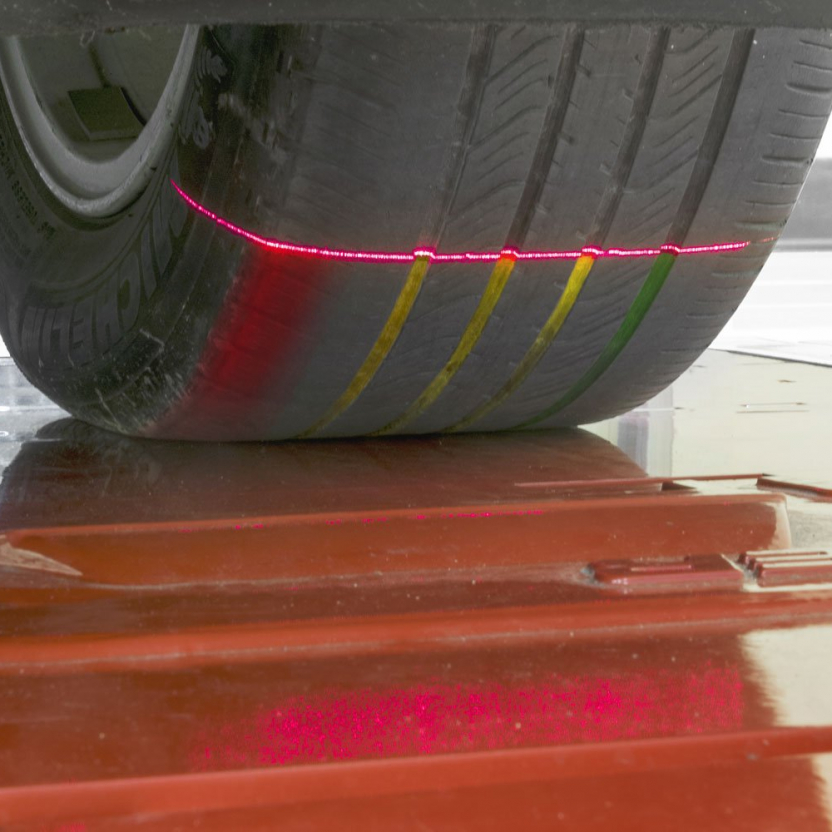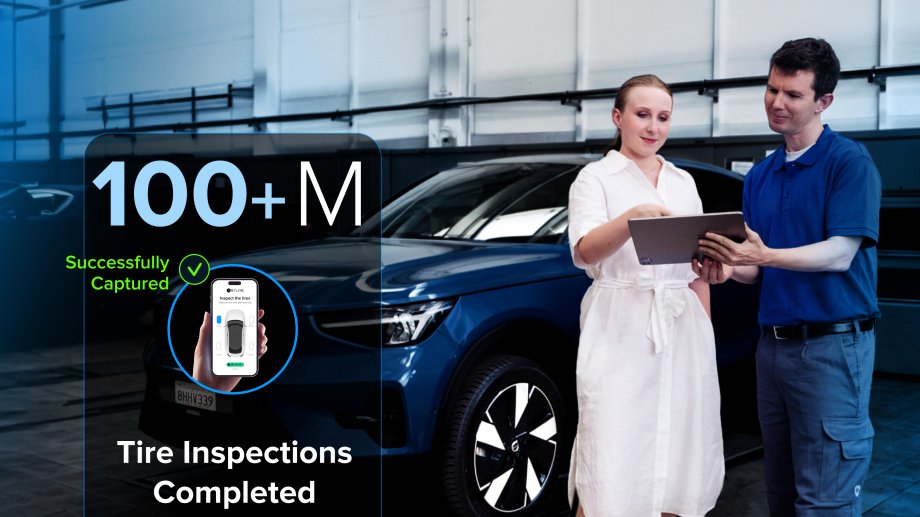
New in 2025: The Ultimate Guide to Tire Tread Scanning Methods
Tires are one of the most significant costs across businesses in the automotive aftermarket industry. To remain competitive, decision-makers adopt new technologies to minimize risk, reduce costs, and improve uptime.
The tire tread scanning industry is no different. With a wide range of new solutions available to unlock tire data, the days of manually checking tire treads are gone, replaced with automated options. Tire tread scanning technology is one of the most critical investments for fleets, repair organizations, tire service centers, and other related businesses. However, knowing which one to choose for your needs requires careful consideration.

Drive over Tire Tread Scanner
One available option is the drive-over tire tread scanner. This method can be effective in certain circumstances. It offers fully automatic tread depth management, which is ideal for heavy goods vehicles, buses, and vans. When driven over, the scanner provides fast measurements, offering accuracy and speed superior to manual methods.
Furthermore, these scanners provide automatic maintenance recommendations and diagnoses, such as identifying a tire with abnormal wear or requiring replacement. They are great for life-cycle management, tracking the tire’s lifecycle over time.
However, this method has some drawbacks. It requires ample space and mobility to function effectively. If the driver cannot maneuver over them, or if this process is time-consuming, its utility is restricted. These scanners are single-purpose tools, dedicating significant space to one function. They are often prohibitively expensive, making them one of the costliest options.
Big Tire Tread Scanning Machines
Another alternative is using large scanning machines, where tires are stacked for scanning. This method offers several benefits. It saves time and provides control over the status of tires in the tire hotel. It enables easy measurement of an entire wheel stack simultaneously, taking approximately 20 seconds with high accuracy. This method also facilitates efficient tire sales and wheel alignment management due to the clear wear image provided by the system.
However, this option also has drawbacks. It is costly, sometimes even more so than other options. It requires substantial space, which many locations may not have. It is also a single-use system, limiting the overall functionality of business premises.
Handheld Tire Tread Scanners
Handheld, device-based tire tread scanners offer a different approach. Various options exist, including tire tread gauges and digital tire tread scanners.
This option has key advantages. It is extremely fast and accurate, providing precise information often difficult to obtain from manual methods. Its compact size, no larger than a smartphone, ensures superb mobility. It can be used anywhere, in any situation. Additionally, they provide automatic diagnosis and maintenance suggestions, enabling immediate action by owners.
However, this option also has disadvantages. It is single-use and can only be used for one purpose. It can also be expensive, making it unaffordable for many locations.

Mobile Tire Tread Scanner
The mobile tread scanner, which can be installed on any mobile device, is a far more efficient solution. It eliminates the common problem associated with single-use tools and requires no physical space at business premises.
The mobile tire tread scanning process is highly accurate, powered by artificial intelligence and machine learning, achieving precision down to 0.3 mm or 1/64 of an inch. Because mobile scanners inspect a larger area of the tire instead of a single measuring point, the data is more reliable than any manual method in the market. The collected information creates a digital 3D model of the tread for a comprehensive understanding of the tire condition.
The mobility and hardware solutions are easily implemented with standard mobile or TPMS devices with a camera. They also provide better oversight since the captured data can be used to make repair decisions. Importantly, this type of tread scanner is much more affordable since you only pay for the software, not the equipment.
While it is an expense, the costs are lower. Your team may require training to use it, but it is designed to be user-friendly.
Key takeaway
In conclusion, tire tread scanning solutions today range from manual methods to drive-over scanners, large scanning machines, handheld scanners, and mobile scanners. Each method has strengths but also limitations, such as cost, space requirements, and single-use functionality.
The mobile tire tread scanner, however, stands out with its unique advantages. It offers high accuracy, mobility, and versatility, all while being cost-effective. It’s not just a tool but a comprehensive solution that adapts to various situations, making it a smart choice for those seeking to enhance efficiency and make informed decisions. This is not about selling a product, but about embracing a technology that could redefine the future of tire tread measurement.
Curious how Anyline’s Tire Tread Scanning solution works? Book a call to learn more.



